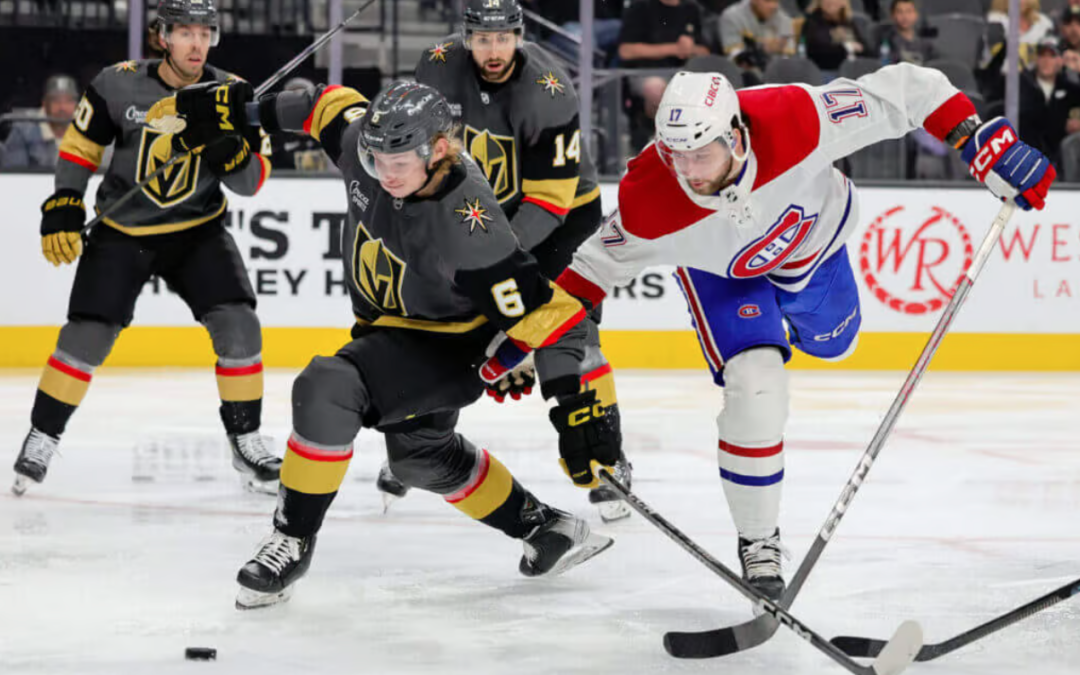Martin St. Louis’ tenets for how he wants the Montreal Canadiens to play should be well known at this point. Play defence as soon as you lose the puck is a big one, and positionless hockey is starting to creep into the picture as well.
But the biggest, by far, is having balance on the ice.
There’s been a lot of emphasis on how Juraj Slafkovský has been playing of late, with good reason. He was the only Canadiens player in Las Vegas on Monday night who didn’t register a single shot attempt. He has four shots on goal in his last four games. He’s losing puck battles. Even at practice at Mullett Arena on Wednesday afternoon, there were several instances where he seemed frustrated when one of his passes got picked off or he lost a puck battle.
The game seems heavy to him right now.
But St. Louis is not looking solely at Slafkovský. He is looking at that entire line with Alex Newhook and Josh Anderson as being deficient. And the big deficiency goes back to St. Louis’ biggest rule of the game of hockey.
“Balance on the ice,” he said simply.
Prior to the start of the season, I sat down with Nick Suzuki to watch video and try to understand what balance on the ice actually looks like. As it turns out, it looks exactly what it sounds like. It’s not that complicated, and it’s not that difficult to identify when it’s being done well and when it’s being done poorly.
“I still think you’re in charge of where you go on the ice. Why do you go there? Well, you go there based on where the opponents are,” St. Louis said. “Because if the opponents aren’t balanced defensively, then there’s a lot of holes … so we can probably play a little more freely, just go where the space is. But when the opponent is in balance, the only way we can play against that is, for us, we have to be balanced.”

Recent Comments